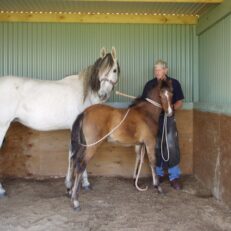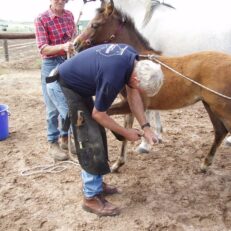Category Archives: Foals & Broodmares
foals & broodmares
TRAINING THE YOUNG HORSE TO BE SHOD
STRIVING FOR HOOF CARE PERFECTION IN THE BROOD MARE
As they approach foaling, mares carry a lot of extra weight and can suffer from hoof abscesses; the greatest majority of these are totally preventable if we just know what to look for. Abscesses occur in predictable places in the hoof, either in the front part of the sole, or the bar area near the heel. Often we make the mistake of just paddock trimming the mares during the year, whereas we should realise that it is extremely important to trim the hoof for soundness whenever it’s done.
An understanding of hoof anatomy and function shows that the horse requires a concave sole, no bar pressure on the ground, no flares in the outer hoof wall and an even weight-bearing hoof wall on the ground with slightly bevelled outer edges. Invariably we tend to leave too much thickness in the … Continue Reading ››EDUCATION
Natural athletic ability is born into all horses: true or false? By the time we get to start training the young horse either on the ground or under saddle, we are sometimes quite convinced that this has to be the clumsiest animal ever bred, while the next one may appear to be totally the opposite.
The simple fact is that sadly, by the time many of our young horses are old enough to do anything with, they have had little or no attention by way of corrective hoof trimming, so we begin their education already way behind the eight ball.
To avoid this dilemma is really quite simple; we need to start looking at their legs and hooves as early as possible and be able to recognise any irregularities in the alignment of bone structures or crooked feet. We then need to begin to put in place a programme of preventative maintenance to be sure the young horse ends up with straight legs … Continue Reading ››


